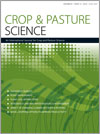CP16238Referencing laser and ultrasonic height measurements of barleycultivars by using a herbometre as standard
Assessment of plant height is an important factor for agronomic and breeder decisions. Visual scoring is time consuming, labour intensive, costly and subjective, therefore, objective and expedient methods to assess the plant height are required. We developed a reference method and showed that distance sensors represent a powerful and economical high-throughput phenotyping tool for breeders and plant scientists to estimate plant height.




